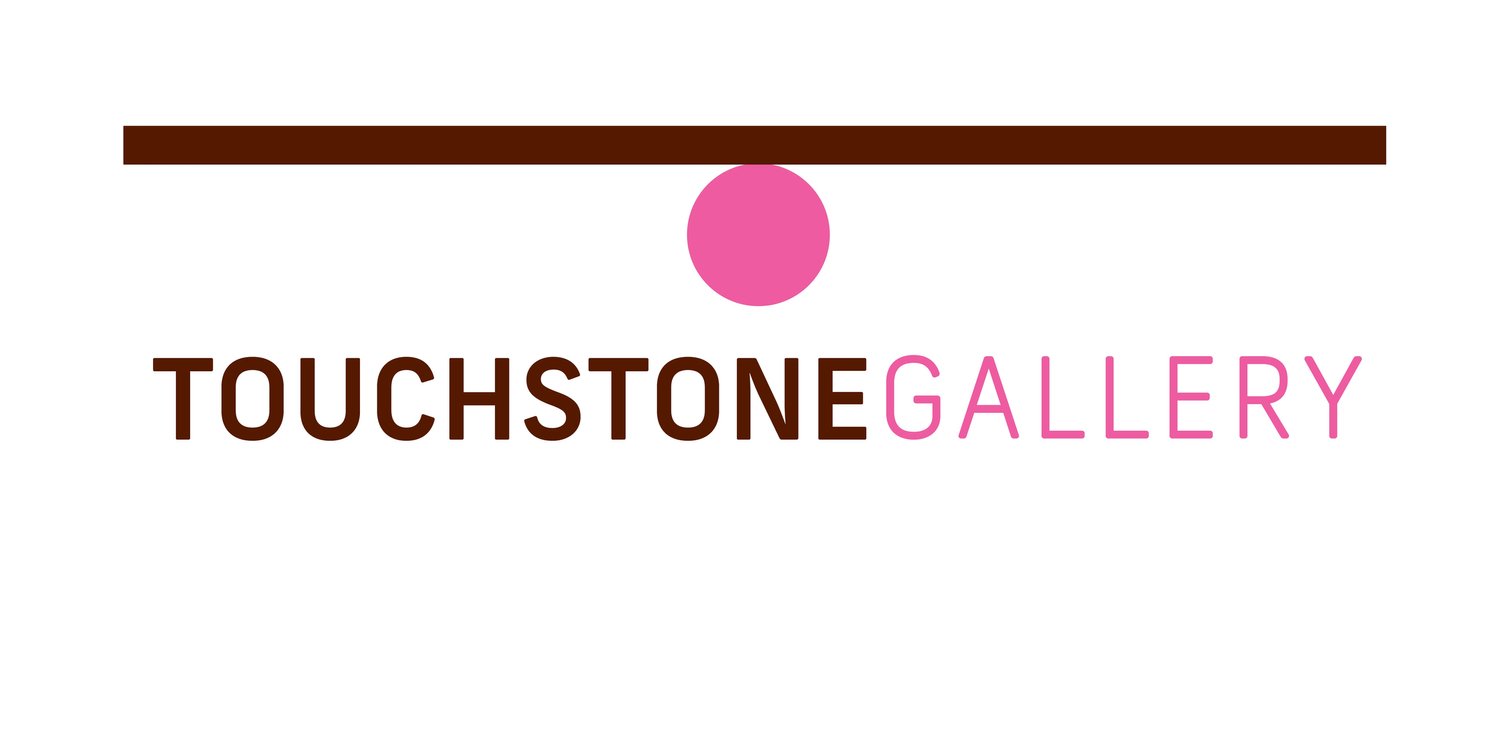by Taylor Freeman and London Wright, Bloomberg Arts Interns and Seniors at Duke Ellington School of the Arts
Sue Canuteson doesn’t plan her paintings. She lets them unfold naturally, using a call-and-response approach as she layers warm, earthy-toned brushstrokes with a wet-on-wet technique. Her work often utilizes the same color palette—prioritizing line and shape. Inspired by the mark-making and patterns found in African art, she is drawn to its coloration, style, and overall feeling. In her own work, she aims to obliterate all literal elements; encouraging viewers to experience the work freely.
Canuteson has always loved art and art history, but she initially pursued a career in marketing and communications. Even then, she found herself drawn to the visual side of things; she became well-versed in typography, layouts, and the use of negative space. After a successful career—including nearly a decade as the editor of a clinical publication—she retired in 2015, giving her the opportunity to fully explore her creative side.
She started with collage, painting her own papers for mixed-media compositions. In 2016, while training to be a museum docent, Canuteson stumbled across a YouTube video of an abstract artist making bold, gestural marks on a canvas. To her surprise, she started crying—a reaction she didn’t fully understand at the time. It wasn’t until she began painting herself that she realized what had happened. Her subconscious had needed this form of expression all along.
By 2018, she took her first painting class, marking the true beginning of her artistic journey. Since then, she has refined her practice, while keeping her process deeply intuitive.
One of Canuteson’s favorite aspects of being an artist is watching visitors stop, linger, and become puzzled with her pieces. She believes that people often try too hard to analyze abstract art when, in reality, it doesn’t need to be explained. “The great thing about abstraction,” she says, “is that it doesn't need to be understood in a literal sense. It’s about feeling.” For her, art is an emotional experience rather than something that must be interpreted in a specific way.
As she moves forward, her goal is to allow more of the unknown to come through in her paintings. She wants to push past her natural inclination toward structure and embrace spontaneity, letting the work evolve organically. Canuteson’s advice to other emerging artists is to “Continue to do what resonates with you and evolve that way.”





